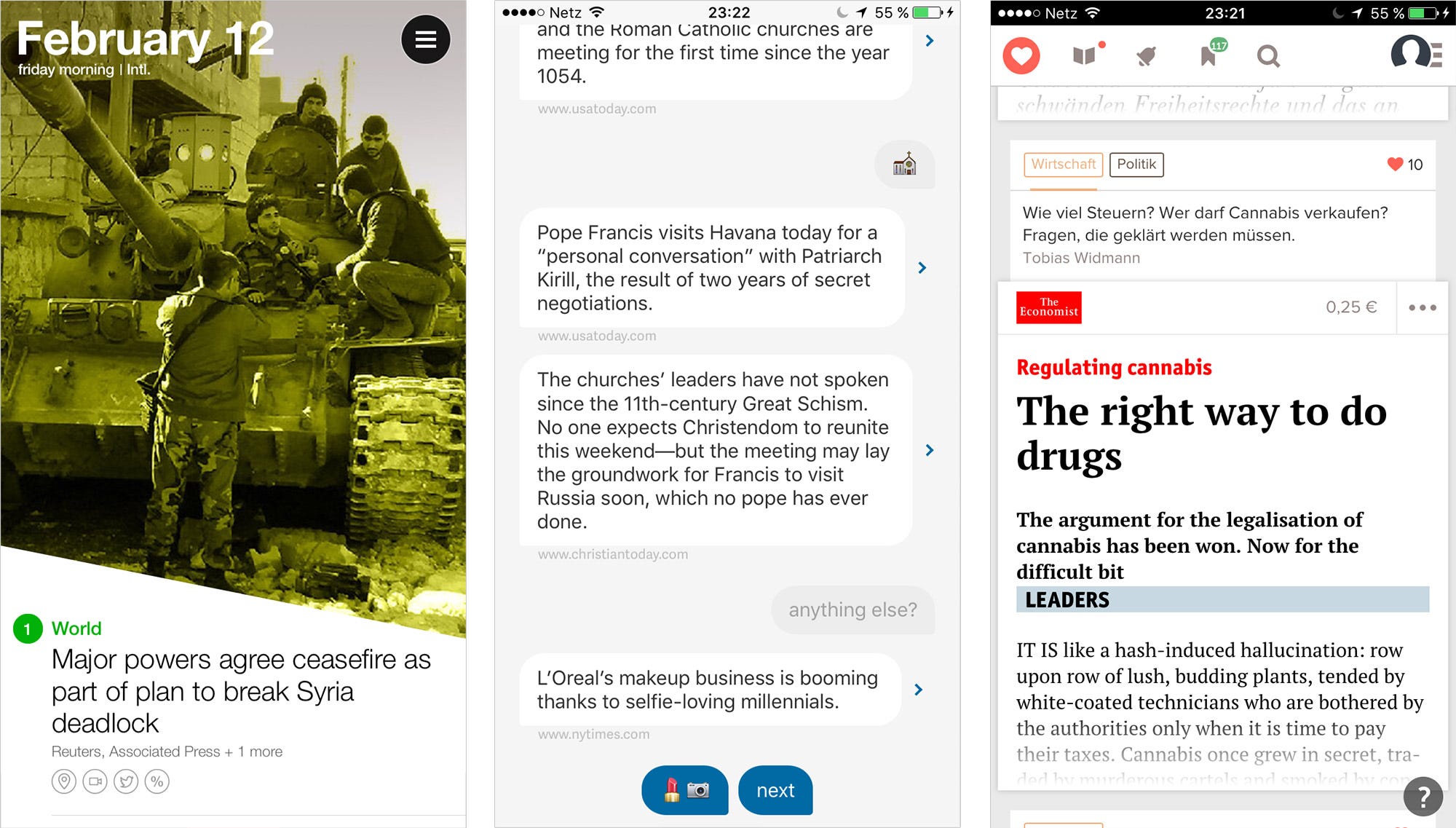Recently there has been a lot of movement on the market for newsreaders and news aggregator apps, and it looks like it’s nearing a point of saturation. Smaller contenders have either folded or got taken over by bigger competitors. Old Media is now also getting into the fray and launching its own newsreaders to reclaim the eyeballs they had previously lost to third-party apps like Flipboard, Zite or Prismatic.
The good thing about this situation: Simply replicating what everyone else is doing just won’t work anymore. Only those willing to take risks, experiment and try out new things can hope to create entirely new markets for themselves. Interesting times, for publishers, writers and readers alike.
News App or All-You-Can-Eat Buffet?
The first personalized newsreaders seemed like the perfect solution to the problem of finding relevant content in an ocean of noise. Their big promise: They would learn what their users wanted and then find this content.
In many newsreaders, first-timer users are welcomed by a prompt to pick a number of topics they are interested in. The assumption is that people mentally organize their interests in silos like “Design”, “Finance”, “Sports”, “Politics” and want to choose what content the app puts in their feed.
This pattern is so old and ubiquitous, it’s likely that if a bunch of people sat in a room and sketched what features they would expect in a newsreader, many would come up with screens like this. But is that because we really want this, or are we just so used to seeing it that we think we want this?

On a surface level, selecting topics of interest makes sense. After all, why would anyone want to read an article about the inner workings of the European Central Bank if they didn’t really care about monetary politics? Why wouldn’t I want to read about a hollywood actors marriage troubles if I liked reading celebrity gossip?
The problem with this approach and how it is implemented in the newsreaders I have tried out myself: getting a truly reliable and relevant newsfeed never worked out. Invariably, my feed ended up filled with inflammatory clickbait and low-quality articles from content farms — just because it happened to mention the right keywords. Instead of a smart assistant that helped me cut through the noise, I just got another channel for pointless distractions.
The thinking behind topic-based discovery is flawed: People never had a problem finding good content on topics they were already interested in. They are familiar with the select, few sources they know they can rely on.
Less, But Better
One of the best articles I have read last year was about a topic I thought I couldn’t be less interested in: Fantasy Football leagues. What pulled me in and made me read the entire piece in one go was excellent writing, from the first sentence on. Had I relied on the feed of an “all-you-can-eat” newsreader and it’s topic based selection, I probably wouldn’t even know the article existed. Even if it had made it into my feed, it would have competed for my attention against dozens of lower quality articles.
What we should expect from news apps today is not that they try to organize the chaos of available content, but that they cut through the noise and give us less, higher quality content.
We should think again if catch-all newsreaders are serving our need for information best. There are interesting, alternative approaches to how apps can deliver news. Not all of these will end up disrupting the news market, but their existence is hopefully a sign of an increasing willingness to experiment instead of regurgitating what others have done before.

Apps like Yahoo News Digest deliberately limit the amount of available information by sending out two daily news briefings, one in the morning, one in the evening, with only handful of articles; The delightful Quartz News with it’s “conversational” newsfeed gives users brief, on-point summaries of each news item, with the option to uncover more details if the story is interesting; Or the Dutch startup Blendle that makes high-quality print journalism available on the internet. Each piece is hand-picked and vouched for by editors.
I think this is great news for publishers, editors, and writers: The less we are willing to expose ourselves to the noise and clutter of regular newsfeeds, the more important writing quality and in-depth reporting will become. The time is right for a shift from quantity to quality.